That didn't work in Android app - instead long press opens the submenu.Swipe left on recorded file name and you get options to export in couple of formats
Thanks for pointing this out.
That didn't work in Android app - instead long press opens the submenu.Swipe left on recorded file name and you get options to export in couple of formats
7E0 22208C - soot mass measured
can0 7E8 [8] 05 62 20 8C 01 DC AA AA
(hex) 01DC => (dec) 476 => 4.76g ((A*256)+B)/100



That’s good.Now the result aligns with VCDS.
Catching up
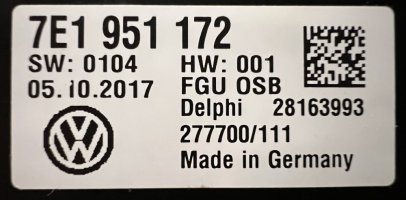
Indeed - T6 Aux Batt is read from controller 18 - Aux.Heater (credit @n10n )yet another controller to monitor - Parking heater (Webasto)

Well, those are already part of Connection profile Volkswagen > OBD-II/EOBD Diesel DPF var. 1.Perhaps we need also these from ABS


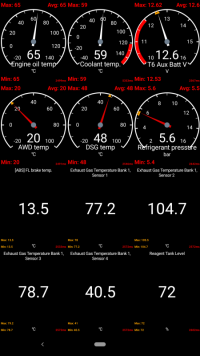

But as for what’s next I did order 2nd hand alarm controller as I don’t have it from factory. I’m probably not about to retrofit it fully but that module includes inclinometer G384 which perhaps can be read without enabling the full alarm functionality… maybe. Now just should find energy to wire it up and test, it would be pretty sweet to get roll / pitch angles to Car Scanner.


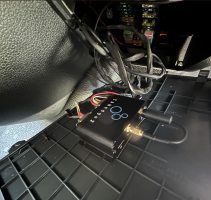
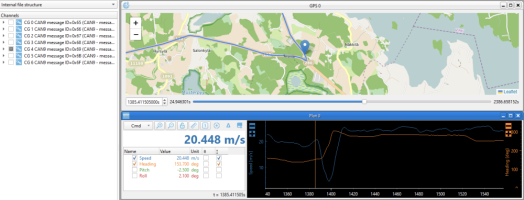
Very nice.CarScanner is nice for realtime observations and VCDS is good for measuring things, given you know exactly what to look for.
But I've been pondering on data collection on a larger scale for a while now. Both CarScanner and VCDS are only good if they're set up to read the exact parameters of interest - neither is really fit for collecting long term trend data or looking into larger picture on the moment something happened. Also, if I would like to collect samples of how my van looks like now when there's thankfully still no major problems, I would need to go through vast amount of sensor measuring combinations and still there wouldn't be any confidence I would be able to capture something that would prove useful in the future.
So, what to do then? As data storage is cheap these days, why not just store all the CAN traffic, all the time? While this would not be necessarily the best resolution of measurements, it should capture everything various ECUs see of the vehicle state including all controls such as blinkers, throttle pos, gear etc. The problem, of course, is the same as in this thread overall - interpreting the data such as custom PIDs is not easy and not public information. However, if I have few years (hopefully) before major problems with the vehicle perhaps I can figure out some of the protocols meanwhile. Also, thinking really optimistically perhaps in a few years time I can just feed all the data to some AI and have it find trends and anomalies for me
I initially pondered on doing this sort of "black box" recording with a Raspberry Pi like in the above experiments. However, to record properly everything we would need to get both drivetrain and convenience CAN buses directly, it's not enough to look at OBD connector. I'm little bit hesitant of plugging cheap DIY stuff to drivetrain CAN on a permanent basis - probably fine when everything is working but it could be actually dangerous if it malfunctions and this kind of recording would need to work throughout years reliably, in -25 to +50 temperature range and endure moisture and vibrations. Also, quite a lot of small issues to solve with DIY solutions - such as how to not lose data when power is cut, packaging to withstand environmental challenges, how to automatically transfer recorded data to a cloud storage etc etc.
I studied ready made solutions and found CanEdge2, which seems to be exactly what I'm looking for and then some bonuses: physically small and really well constructed, not very power hungry, capable of recording 2 CAN buses and 2 LIN buses simultaneously, GNSS + IMU, wifi for automatically transferring data out etc. The downside is the price: being kind of niche product it's not exactly cheap, then again considering the potential for years to come it might prove it's worth.
So, during weekend I installed CanEdge2 to my fusebox cover and connected it to record drivetrain and convenience CAN -buses and LIN bus plus set up the automatic data transfers to Amazon S3. Right now, I'm still waiting to receive nicer DB9 connectors so some tidying up still tbd. Ofc I don't as of now have any custom data parsing set up so for now it's just a quite expensive but good quality tracker. Hopefully going forward I can actually extract meaningful vehicle data and look at their trends all the way back to this past weekend
View attachment 198999
View attachment 198998
Very nice.
It Would be good to see what the extracted data looked like on an @mmi style Excell graph set. Start easy like, rpm + speed , or rpm + fuel rail pressure

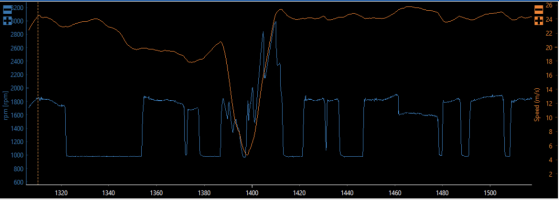
$ cat 20230514-test.csv | grep ";7E0;" | grep "22208B"
TimestampEpoch;BusChannel;ID;IDE;DLC;DataLength;Dir;EDL;BRS;DataBytes
1684075635.437650;1;7E0;0;8;8;0;0;0;0322208B00000000
1684075638.076550;1;7E0;0;8;8;0;0;0;0322208B00000000
... lot of requests ...
1684077975.871100;1;7E0;0;8;8;0;0;0;0322208B00000000
1684077977.792100;1;7E0;0;8;8;0;0;0;0322208B00000000$ cat 20230514-test.csv | grep ";1;" | grep ";7E8;" | grep "62208B"
$ cat 20230514-test.csv | grep ";1;" | grep "62208B"
$ cat 20230514-test.csv | grep ";1;" | grep ";7E8;"Sigh... this is INTERESTING and definitely adds a new level how to stay informed what's going and especially what has been going on under the hood.



Like this blue signal which I originally thought to be a very noisy accelerator pedal position - it correlates quite strongly with rpm (orange) and accelerator on (red). But it doesn't move with engine not running, so it's something else.

I have a terrible wire lump there blocking the easy access, ton of retrofitsWould an fairly easy to reach option to tap into drivetrain at Parking aid control unit (J446)?

